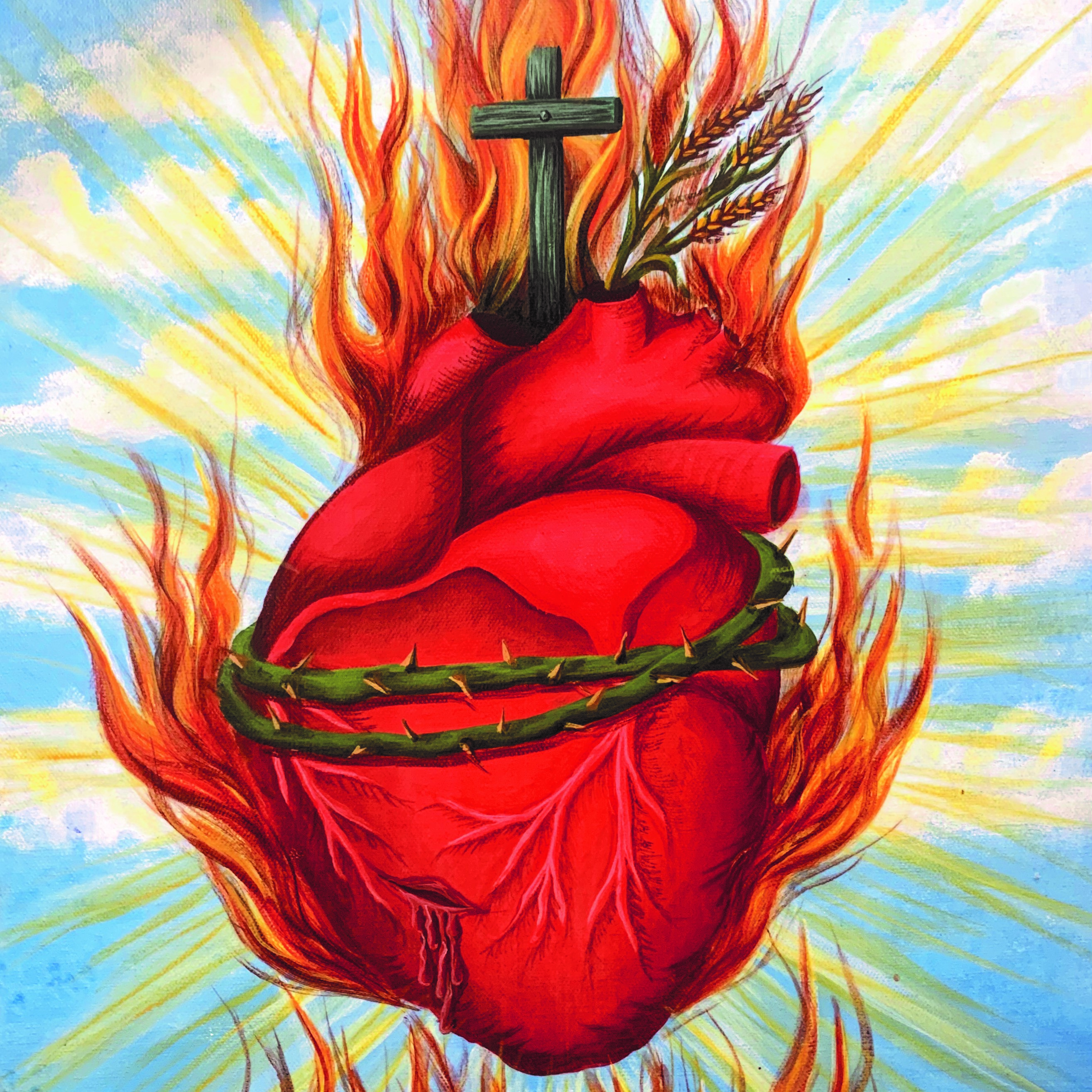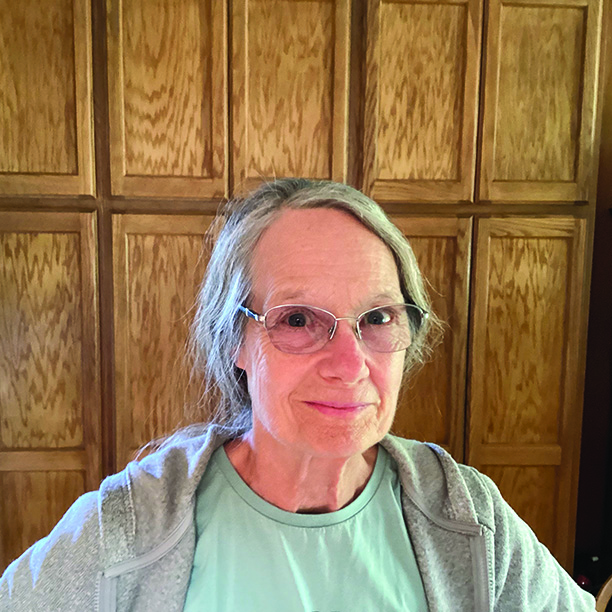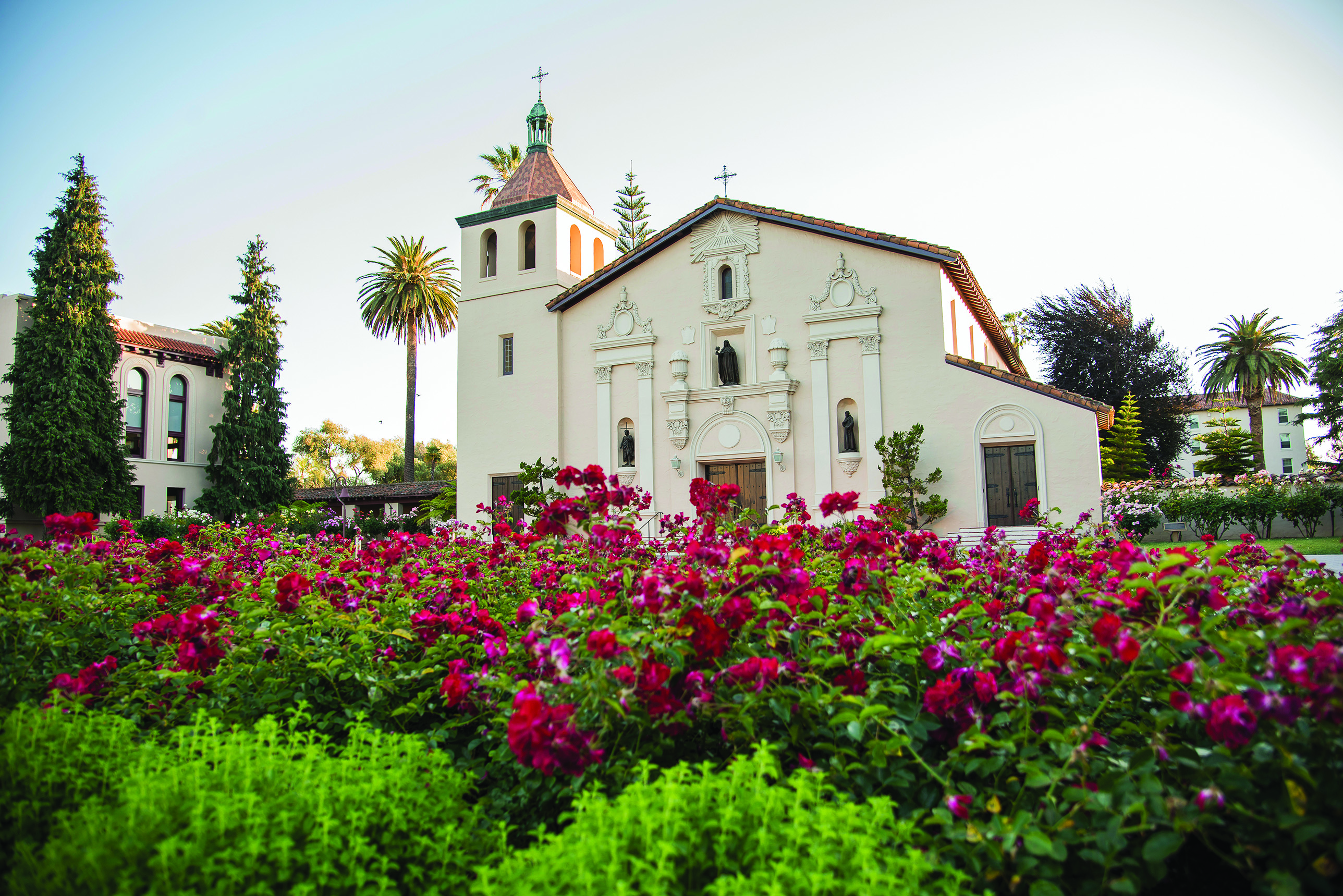
Catholicity and Confusion

By Phillis R. Brown
Professor in Department of English at Santa Clara University
Catholicity and Confusion
I don’t remember now why I signed up in fall 2020 for the Santa Clara University Seminar on the Catholic Intellectual Tradition, or what I hoped to gain from participation. I learned about Catholic intellectual traditions as part of my doctoral investigation of an Old English poem about St. Guðlac, and subsequently from my research on medieval women writers such as Hrotsvit of Gandersheim, Hildegard of Bingen, and Abbess Héloïse. I participated for many years in Santa Clara’s Ignatian Faculty Forum, I journeyed to El Salvador with a group of faculty and staff to deepen my understanding of Jesuit social justice and Santa Clara’s mission, vision, and goals, and my teaching invited my students and me to read medieval Christian texts carefully and thoughtfully. Dante’s Commedia is a guide to my thinking about Catholicism. I was also married to a former Jesuit and fellow medievalist for more than 40 years.
But our reading for the second session of the seminar set my mind on fire. Specifically, John Haughey’s chapter “Catholicity: Its Scope and Contents” in Where is Knowledge Going? The Horizons of the Knowing Subject, which opened my mind to new ways to think about Catholicism, teaching, learning, and education more broadly. As the seminar progressed and summer allowed more time to reflect on the readings and discussions, I have achieved what I think is a glimmer of clarity in a morass of confusion about learning and understanding.
My confusion exists against the backdrop of fraught political, social, and health situations throughout the world, but more specifically relates to University decisions and communications. Colleagues I respect and trust hold diametrically opposed positions related to recent events and situations, evoking in me the following questions:
- Why has the SCU administration advocated a union vote that would count non-votes as opposition to unionization?
- Does the recent report of findings related to financial management during the pandemic sidestep the issues of concern?
- Does Acting President Lisa Kloppenberg’s official update on the 2020 campus incident1 involving my English department colleague indicate that the administration has returned to an insensitivity to racial inequities on our campus?

Yesi Magdaleno-Solis, Corazón, 2021.
In brief, Santa Clara University Campus Safety officers confronted the brother of a faculty member who was sitting on campus to work while visiting his sister. They followed him to his sister’s home and then challenged her assertion that the house, owned by Santa Clara University, was her home. Neighbors alleged that this challenge would not have happened if the faculty member and her brother were white. However, the Equity Hearing Panel that adjudicated the incident found no evidence that the Campus Safety Officers were motivated “by racial animus or bias.” Each of these questions involves a larger question about administrative attitudes toward faculty, which, in my view, invites parallel questions about faculty attitudes toward students and the administration, which all contribute to a more nuanced understanding of how a university can best achieve its mission and goals. Haughey writes:
As catholic, a Catholic university inevitably houses many worldviews. It can do this in several ways. One is simply to make room for those who hold these plural worldviews. This is a negligent or, at best, a merely tolerant hospitality. A second way a university can house plural worldviews is by hearing them, taking them seriously, engaging them.
This second form of hospitality can lead to a real growth in understanding on the part of both hosts and guests. (p. 37) This second form of hospitality is also much more challenging. Can an administrative leader possibly engage with every perspective for every decision? Can a faculty member take the time to engage with every student’s views on the subject matter of the class? Are all views equal in value? When is the value of silence on an issue greater than the value of transparency?
While the answers to my questions here are no— because no one can engage with every perspective and opinion—Haughey helps me toward understanding where my questions can lead me. For example, fundamental to his discussion of where knowing is going is acknowledgement that knowing is not going toward certainty about human endeavors. Rather, it is going toward increasing awareness of complexity. Thus, in the first paragraph of the chapter “Catholicity: Its Scope and Contents,” he writes:
Education must be something of great value, since everyone wants to “get” one. Superficially, what people want is the knowledge and skills to make a living. More trenchantly, what people want, I believe, is a deeper grasp of what is so and what isn’t so. But the more informed one becomes about the “is so,” the more complex matters get. (p. 40)
Hence, openness to multiple worldviews— hospitality that is more than tolerant—is not easy. Nevertheless, even though open attention to complexity for students, faculty, and staff often is frustrating and confusing, the results can be gratifying if we are willing to persist. Haughey argues, “Together with the classical notions of being and value, the notion of catholicity can help us to bring into focus what otherwise can be so disparate as to verge on the incoherent” (p. 54). He goes on to describe catholicity as “a heuristic that pushes for a further whole, a connectedness between knowns that are also known to be partial” (p. 59). In a later chapter, “Where is Knowing Going,” Haughey cites Johannes Metz on the character of our eschatological knowledge: “‘What distinguishes the Christian and the secular ideologies of the future from one another is not that the Christians know more, but that they know less about the sought-after future of humanity and that they face up to the poverty of their knowledge’” (p. 118). These observations encourage me to step back from deciding who is right and who is wrong in administrative decisions to take what may be a more fruitful stance: considering how partial elements of what “is so” and “is not so” can help me better understand how I can contribute to the greater good of the University and help students lean into the “poverty of their knowledge.”
To ground my thinking in the particular, I will return to one of the questions I pose above as contributing to my confusion about Acting President Kloppenberg’s email update on the 2020 campus incident. Two particularly detailed written responses to the report draw on disciplinary expertise. The first, written collaboratively by the English department’s incoming chair and six other faculty, alleges distortions in the email report’s statement that a panel’s “adjudication in accordance with the University’s Interim Policy on Discrimination, Harassment and Sexual Misconduct” found “no evidence of racial animus or bias”—in addition to the implication that the panel’s findings align with the findings of the independent audit of Campus Safety2 conducted this past year by LaDoris Cordell, a retired judge of the Superior Court of California. The English department’s response also calls Kloppenberg’s choice to welcome the four Campus Safety officers and our colleague and her family back to campus in a single sentence, specifying that the past year has been “a particularly difficult time” for “all parties,” an “equivocation.” The English department’s response:
- deplores the lost “opportunity for the administration to acknowledge the harms done” to our colleague and her family “and affirm[s] the university’s stated goal of building a community committed to anti-racism”
- cites the independent audit of Campus Safety conducted by LaDoris Cordell, which found a “racial disconnect” because “many, if not most [Campus Safety leadership and personnel] operate with a color-blind, ‘I never see a person’s color’ mindset”
- concludes with a call to specific actions from the SCU administration
Shortly after the English department message was posted, Kloppenberg’s email update was reposted, with no acknowledgement of faculty response. Following the second posting of the email update, the chair of the history department posted a statement signed by 11 department members. After naming three areas of concern, similar to those in the message from the English department, the history department’s message concludes:
As historians we believe it is critical for the administration to be proactive in creating a new culture of collective responsibility for learning about and fighting the malignancy of white supremacy. It is vital that faculty, staff, and students of color feel seen and heard when they talk about their experiences of microaggressions, discrimination, covert, and overt hostility in our community. We must do more. The university leadership must take affirmative short-term steps to enact the changes recommended by the CSS audit as a way to begin rebuilding trust in the institution.
In this instance, as well as in the other two instances listed above, the Santa Clara University administration positions itself as committed to “the fundamental values woven into all we do as a university in the Jesuit, Catholic tradition, and our expressed values of community and diversity.” Implicit in the administrative positions is responsibility related to confidentiality of some reports and outcomes. For example, specific details of penalties for actions that violate University policy are not publicly reported. Furthermore, briefer reports are generally preferable to longer, more detailed reports. But the administrative positions fall short of the catholicity Haughey advocates, giving the impression of an easy version of what “is so” rather than acknowledging the complexity. Rather than positioning the decisions in a continuum of the University’s ongoing efforts to grasp what is so and what isn’t so, the decisions were presented as authoritative and final judgments. Official communications related to the three issues I name above likely would result in less confusion if administrative leaders were willing to respond directly and publicly to questions and allegations of errors of fact raised by faculty (also by students and staff). The absence of that response gives the impression of authoritarian Catholic hierarchy and tradition rather than the catholicity Haughey writes about as essential to where knowing is going.
The impression of authoritarian Catholic hierarchy may also have contributed to two University decisions that limit discussion. The Faculty Senate Council has excluded administrators above the level of department chair from meetings, except if they are explicitly invited to attend. Similarly, the SCU Racial Justice Group excludes administrators above the level of chair from participation. The reason for the exclusion is a belief that administrative presence will intimidate faculty and staff and impede discussion. In other words, both the Faculty Senate Council and the SCU Racial Justice Group value open discussion among faculty, or faculty and staff, over discussion with administrators. Hence, while I am aware of many ongoing discussions, the discussions may fall short of the openness and hospitality fundamental, in Haughey’s view, to progress toward a university guided by catholicity.

Joanne H. Lee
A significant example relates to the email update on the events of 2020. I infer from details in the aforementioned independent audit of Campus Safety Services (CSS) that the email update attempts to respond to the feelings of Campus Safety officers who reported that messages from then President O’Brien had resulted in widespread antipathy toward them, i.e., had metaphorically thrown them under the bus (XIX.A.(2)). The 21 officers who participated in conversations in the audit “were unanimous that they were not racist and that they perform their work in a color-blind manner (XIX.A.(3)). Indeed, the independent audit of CSS provides ample evidence that the behavior of Campus Safety officers had been encouraged by policy and practices of the campus unit. That helps me posit an understanding of the seeming contradiction in the email update: allegations of animus or racial bias were not confirmed but three officers had interacted with our colleague in a way that was “‘misdirected and unnecessary’ and ‘violated University Policy (Campus Safety Policy Manual 413.4) by their actions.’”
Significantly, the audit introduces its findings with an important statement: “CSS leadership sends a mixed message to its own personnel and to the SCU community. To the community, CSS purports to be the ‘Department of YES,’ committed to ‘customer service.’ However, CSS’s training, verbiage, and activities also sends a message that it is primarily law enforcement focused” (XXII.(1)). The audit then draws on social psychologist Jennifer Eberhardt’s Biased: Uncovering the Hidden Prejudice That Shapes What We See, Think and Do to contextualize the evidence that most CSS staff “operate with a color-blind, ‘I never see a person’s color’ mindset,’” which, according to Eberhardt, “can actually impede our move toward equality.” This section of the audit goes on to report that “even after undergoing implicit bias training presented by members of Dr. Eberhardt’s team, several CSS officers continued to assert that they were color-blind” (XXII.(2)). These details suggest to me that the law enforcement focus of CSS combined with leadership and hiring practices to encourage and reward are impediments to SCU’s goals of diversity, equity, and inclusion.
Moving CSS leadership from University Operations to the Office for Student Life is likely to result in clearer understanding of a CSS mission and goals shared by the campus community and CSS staff, but in the meantime, it is understandable that CSS officers feel betrayed by SCU leadership. The audit suggests the sense of betrayal is shared by University Operations and perceived as a betrayal by then University President Kevin O’Brien, S.J. Although Kloppenberg refers to the audit, she does not point to any of the reasons why she presents the CSS officers as victims to be welcomed back to campus with the member of the English department and her family. I believe neither she nor administrative leaders of CSS or campus operations have accepted responsibility for harm done to any of the people involved beyond mention of an upcoming report that will update the campus community on efforts to reimagine policies and procedures that guide the work of CSS. Her goal may be to undo harm resulting from Fr. O’Brien’s apologies to the campus community for racist underpinnings of campus policies and practices and promises to bring about change, which some perceived as pointing a finger of blame at individuals who were enacting what their training had encouraged.
Close examination of what is so and what is not so in this example doesn’t result in comforting conclusions about what is right and what is wrong. Instead, it can encourage attention to the idea Haughey attributes to Fr. Michael Himes: “maybe a Catholic education is at its essence a training in beholding” (p. 1). Himes introduced Haughey to the idea while teaching “Hurrahing in Harvest,” a sonnet by Gerard Manley Hopkins, in which the speaker marks a turn in the final six lines, saying, “These things, these things were here and but the beholder/ Wanting” (lines 11–12). In the poem, the “things” are elements of beauty the beholder had failed to see. Haughey asks his readers whether they are willing to apply this poetic insight to thinking about ways we need a training in beholding to better understand where knowing is going and what we can aim to behold in our work.
I see failures of beholding in myself resulting from acculturation that privileges white people and encourages unquestioning respect for authority, whether they are administrative leaders or teachers. That acculturation is a reality faculty encounter as we aim for anti-racist and anti-misogynist thinking and behavior in our classrooms—and a reality administrative leaders encounter as SCU works toward our goal of diversity, equity, and inclusion in all of our practices and policies. But I also see evidence of progress toward a greater good. For example, I observed a first-year writing class taught by my colleague Robin Tremblay-McGaw in which students were given time to “look at” details first in a visual text and then in a reading assignment, after which they shared what they saw by calling out their observations rather than by sharing in a discussion. Robin explained to me that she had drawn on Verlyn Klinkenborg’s Several Short Sentences About Writing when she designed the class exercise. Klinkenborg writes:
The central fact of your education is this:
You’ve been taught to believe that what you discover by thinking,
By examining your own thoughts and perceptions,
Is unimportant and unauthorized.
As a result, you fear thinking,
And you don’t believe your thoughts are interesting,
Because you haven’t learned to be interested in them.
But everything you notice is important.
Let me say it a different way:
If you notice something, it’s because it’s important.
But what you notice depends on what you allow yourself to notice.
And that depends on what you feel authorized, permitted to notice
In a world where we’re trained to disregard our perceptions.
Robin could have used the verb “behold” in place of “look at.” Her goal is similar to Haughey’s: to encourage the willingness and confidence to behold what has gone unnoticed or not been trusted because unauthorized.
Robin’s “look at” exercise leads to close reading of texts, compelling discussions, and thoughtful essays about challenging topics, an outcome beneficial in many undergraduate classes. The exercise provides practice related to SCU’s goals for undergraduates,3 especially the overarching institutional commitment: “Santa Clara University will transform students’ lives through a personalized Jesuit education that integrates rigorous study with high-impact experiential learning and fosters critical, creative, and reflective thinking; complex problem-solving; excellent communication skills; and the application of knowledge for the betterment of society.” Faculty and administrators are also encouraged to “look at” or “behold” in workshops and discussion groups, many of which have focused in the past two years on ways to move toward greater diversity, equity, and inclusion in University policies and practices, as well as in our own classrooms. For those of us who care passionately about where knowing and learning are going, it may be easier to see lack of progress than progress. Hence the many emails from faculty drawing attention to continuing problems. I certainly don’t advocate ignoring the problems, pretending they have gone away. But I do think attention to the good is equally important. Humans are more willing to change if the change builds on something positive. Therefore, many faculty begin a response to student writing by articulating the strengths before focusing on select areas for improvement, rather than attempting to draw attention to every error or infelicity. Some administrative leaders have adopted this practice.
Haughey’s book emphasizes the importance and value of openness and hospitality to the goals of education generally, but especially Catholic education. That openness requires dialogue with what has been called “eloquent” listening. A 2014 article in The Atlantic on the occasion of American politician Howard Baker’s death reports that Baker attributed his political success to being an eloquent listener:
“I increasingly believe that the essence of leadership, the essence of good Senate service, is the ability to be an eloquent listener, to hear and understand what your colleagues have to say, what your party has to say, what the country has to say ... and try to translate that into effective policy,” he said in 2011 in an interview with the Bipartisan Policy Center. He loved that phrase “eloquent listener,” explaining, “There is a difference between hearing and understanding what people say. You don’t have to agree, but you have to hear what they’ve got to say. And if you do, the chances are much better you’ll be able to translate that into a useful position and even useful leadership.”
I believe many on campus are working hard to be eloquent listeners, listening to students, faculty, staff, and administrators. Haughey’s book encourages us to continue listening eloquently as often as possible and continue working to translate what we hear—and behold—into useful change, moving closer to being the best university we can be, knowing that each improvement will result in new questions and clearer understanding of what else needs our attention. The vision Cardinal Joseph Bernardin offered in his 1996 address “Faithful and Hopeful: The Catholic Common Ground Project” inspires me now: “a vision of church that trusts in the power of the spirit so much that it can risk authentic dialogue.” More recently, in a Commonweal article about preparation for the October 2021 “Synod on Synodality,” Austen Ivereigh writes, “Synodality requires us to understand that we do not possess the truth, but that sometimes, when we put aside our emotions and agendas, it possesses us, overflowing the narrow channels of our thinking.” I believe the educational mission of Santa Clara University positions faculty, staff, students, and administration to lead by accepting the risks of authentic dialogue. As Acting President Kloppenberg wrote in her September 17 email, “One of the hallmarks of Santa Clara University has always been that our community is relationship-based—united in our mission on behalf of students, committed to shared values, and willing to do the work of listening and understanding to solve difficulties.” That requires working with the confusion resulting from fraught political, social, and health situations throughout the world, including confusion related to University decisions and communications.
Phyllis R. Brown, a professor in the Department of English, received her Ph.D. from the University of Oregon in 1979 and has been teaching at Santa Clara University since 1982. Between 2008 and 2015, Brown served as director of the Core Curriculum and Associate Provost for Undergraduate Studies. In 2015 Brown returned to full-time teaching, scholarship, and department leadership. Her publications include essays on Beowulf, writings by Hrotsvit of Gandersheim, Heloise’s letters to Abelard, Guillaume de Machaut’s lyric poetry, Louise Labe’s poetry, and issues in higher education. Current research and writing address Catholic identity in higher education and transformative learning.
Notes
1 scu.edu/lk/update-on-2020-incident-0817/
2 “Audit of Campus Safety Services, Santa Clara University” (scu.edu/campus-safety-audit-report/?r=report/&g=)
3 Undergraduate Learning Goals (scu.edu/provost/institutional- effectiveness/assessment/undergraduate-student-learning-goals/)